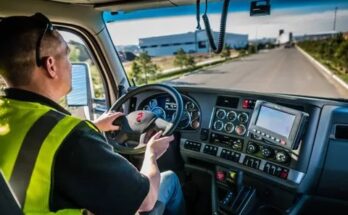US Delivery Boy Jobs
In today’s fast-paced, technology-driven world, the way we shop, eat, and interact with services has dramatically transformed. Among the most visible changes is the rise of on-demand delivery services that bring everything from hot meals to everyday essentials right to our doorsteps. At the heart of this revolution are delivery jobs, often colloquially known as “delivery boy” jobs—a term that, while outdated in some contexts, continues to evoke the image of dynamic, fast-moving individuals who power the logistics behind our modern lifestyles. In this article, we dive deep into the world of delivery jobs in the US, exploring the opportunities, challenges, and future trends in this ever-evolving sector.
The Evolution of Delivery Jobs in America
The concept of delivery has evolved considerably over the past few decades. Traditionally, delivery roles were associated with courier services or local restaurants relying on in-house staff. However, the advent of digital technology and mobile applications has completely transformed this industry. Today, companies like Uber Eats, DoorDash, Grubhub, and Postmates have redefined what it means to be a delivery driver.
This evolution has not only expanded the scope of available jobs but also shifted the way these roles are perceived. What once might have been seen as a temporary or part-time gig has become a viable career option for millions of Americans, providing flexible working hours and an avenue to earn extra income or even a full-time living. The modern delivery driver is now a tech-savvy professional who uses smartphone apps to navigate, accept orders, and interact with customers—all while juggling multiple tasks in a fast-paced environment.
The Role and Responsibilities
Delivery jobs in the US span a range of responsibilities and can be broken down into several categories:
-
Food Delivery: Perhaps the most visible aspect of the gig economy, food delivery drivers pick up orders from restaurants and deliver them to customers’ homes or offices. This role demands excellent navigation skills, quick decision-making, and a friendly demeanor.
-
Package Delivery: Beyond food, there’s a burgeoning market for package delivery driven by the e-commerce boom. Drivers for companies like Amazon Flex or local courier services are responsible for timely and secure package deliveries, often under tight deadlines.
-
Grocery Delivery: As more consumers turn to online grocery shopping, delivery drivers for supermarkets and specialized grocery services are in high demand. This segment often requires additional care since items range from fresh produce to fragile goods.
-
Miscellaneous Delivery Services: Some drivers handle a mix of tasks, including delivering medical supplies, retail merchandise, or even alcohol. Each of these roles requires a unique set of skills and adherence to specific regulations.
Across these categories, the core responsibilities remain consistent: picking up items from designated locations, ensuring the safe transit of goods, navigating efficiently through traffic, and providing excellent customer service. While the job might appear straightforward, the reality is that each shift comes with its own set of challenges and learning curves.
Opportunities and Benefits
One of the most appealing aspects of delivery jobs in the US is the flexibility they offer. For many, these roles are ideal for those seeking:
- Flexible Scheduling: Whether you’re a student, a parent, or someone seeking a second income, the ability to choose your own hours is a major draw. Drivers can log in during peak hours to maximize earnings or work part-time around other commitments.
- Low Barrier to Entry: Most delivery jobs require only a valid driver’s license, a reliable mode of transportation (car, bicycle, scooter, or even a motorcycle), and a smartphone. This low entry threshold makes it accessible to a wide range of job seekers.
- Immediate Earnings: Unlike traditional jobs that may have lengthy application and training processes, many delivery platforms offer the chance to start earning relatively quickly after a streamlined onboarding process.
- Independence: Many drivers appreciate the sense of autonomy that comes with gig work. Without the constant oversight of a traditional manager, you’re largely in control of your work environment and pace.
- Diverse Experiences: Each shift can bring something new—different routes, customer interactions, and the occasional challenge that keeps the work interesting and engaging.
Challenges Facing Delivery Workers
Despite the many benefits, working as a delivery driver is not without its challenges. Many of these challenges stem from the nature of gig work and the competitive landscape of the delivery market:
-
Inconsistent Income: One of the most significant concerns for gig workers is the variability in earnings. Factors such as weather, traffic, and the number of available orders can lead to fluctuations in daily income. Additionally, tips, which form a substantial part of a delivery driver’s income, are not always guaranteed.
-
High Operational Costs: While many drivers enjoy the freedom of using their own vehicles, this also means they bear the costs of fuel, maintenance, and repairs. For those using bicycles or scooters, weather conditions and physical strain can be additional concerns.
-
Safety Concerns: Navigating busy urban streets or unpredictable suburban roads can be hazardous. Drivers often face risks ranging from traffic accidents to crime, particularly when delivering late at night or in high-crime areas.
-
Limited Benefits: Unlike traditional employment, many gig workers do not receive benefits such as health insurance, paid leave, or retirement contributions. This lack of security has sparked debates about worker rights and the need for better protections in the gig economy.
-
Technology Dependence: While smartphone apps have streamlined the process of order delivery, they also mean that drivers are subject to frequent updates, algorithm changes, and potential outages. A glitch in the system can mean lost income and frustration.
Economic and Social Impact
Delivery jobs have far-reaching economic and social implications in the United States. They support local economies by ensuring that small businesses and restaurants can reach a wider audience, especially during times when in-person dining is limited. Moreover, the convenience of on-demand delivery has become an integral part of modern consumer culture, fundamentally changing how Americans access goods and services.
From a broader perspective, these jobs contribute to reducing unemployment and offering alternative career paths for individuals who might not fit the mold of traditional employment. However, they also highlight broader societal issues related to income inequality and the need for better labor protections. As more Americans turn to gig work, there is a growing call for policy reforms to ensure that these workers receive fair compensation and benefits reflective of their contributions.
The Role of Technology in Shaping the Future
Technology has been a game-changer in the delivery industry. Here are some of the technological advancements that are influencing the future of delivery jobs:
- Mobile Apps and Real-Time Navigation: The backbone of any delivery job today is the smartphone app. These apps not only help drivers find the fastest routes but also update them on order statuses, customer feedback, and potential earnings in real time.
- Artificial Intelligence (AI) and Data Analytics: Companies are leveraging AI to optimize route planning, predict peak times, and even set dynamic pricing models. For drivers, this means more efficient work and potentially higher earnings if they can position themselves strategically.
- Automation and Robotics: Looking further ahead, automation is starting to make its mark in the delivery space. From autonomous vehicles to drones, technology is gradually taking over some of the repetitive tasks. While this may seem like a threat to traditional delivery jobs, many experts believe that there will always be a need for human oversight and intervention.
- Digital Payments and Contactless Delivery: In a post-pandemic world, contactless transactions have become the norm. Digital payment systems not only provide convenience for customers but also ensure a secure and traceable payment process for drivers.
- Wearable Technology and Safety Devices: Innovations such as smart helmets, body cams, and GPS tracking devices are helping to improve driver safety. These technologies provide real-time data that can alert drivers to potential hazards and assist in accident prevention.
Preparing for a Career in Delivery Jobs
For individuals interested in exploring a career in delivery, there are several practical steps to consider:
-
Ensure You Meet the Basic Requirements: Most delivery jobs require a valid driver’s license and access to a reliable mode of transportation. For those interested in bicycle or scooter deliveries, ensuring your equipment is in good condition is paramount.
-
Download and Register with Multiple Platforms: Diversifying your options by registering with multiple delivery services can help maximize your earning potential. Each platform may have its own strengths and peak hours, so having access to several can provide more consistent work.
-
Stay Informed About Local Regulations: Depending on your city or state, there may be specific regulations governing gig work or delivery services. Staying informed can help you avoid potential fines or legal issues.
-
Invest in Safety and Maintenance: Whether it’s keeping your vehicle well-maintained or investing in safety gear, proactive steps can help reduce risks and ensure you’re always ready for your next delivery.
-
Manage Your Finances: With income that can be unpredictable, it’s essential to budget carefully, set aside money for taxes, and consider savings strategies. Financial planning is a crucial part of thriving in the gig economy.
-
Embrace Technology: Since these roles are inherently tech-driven, becoming proficient with the apps and tools used by delivery platforms can significantly enhance your efficiency and overall earnings.
The Broader Impact on Society
Delivery jobs, while often seen as individual gigs, have a broader social impact. They create a link between local businesses and consumers, fostering a sense of community and supporting economic activity across various sectors. In many urban areas, the availability of reliable delivery services has reshaped consumer behavior—transforming everything from dinner plans to shopping habits.
Moreover, these jobs have been instrumental in providing work opportunities during economic downturns and crises, such as the COVID-19 pandemic. When traditional employment options were limited, many turned to gig work, helping to stabilize household incomes and keep local economies afloat. However, this also underscores the need for systemic reforms to ensure that these workers are not left vulnerable in times of uncertainty.
Looking Ahead: Future Trends and Innovations
As we look to the future, several trends are poised to further shape the landscape of delivery jobs in the US:
- Enhanced Worker Protections: With growing awareness of the challenges faced by gig workers, there is a push for legislative reforms that would provide benefits similar to those enjoyed by traditional employees. This could include access to healthcare, paid time off, and retirement savings plans.
- Increased Use of Renewable Energy: As environmental concerns become more urgent, many delivery companies are exploring eco-friendly solutions. This includes the adoption of electric vehicles, eco-friendly packaging, and optimized routing algorithms designed to reduce fuel consumption.
- Integration with Urban Planning: With the rise of on-demand delivery, cities are beginning to rethink urban planning. Dedicated lanes for delivery vehicles, designated pickup/drop-off zones, and even drone corridors may soon become part of the urban landscape.
- Continuous Skill Development: The fast-paced nature of technology means that drivers will increasingly need to upgrade their skills. Ongoing training programs, both formal and informal, will be key to ensuring that delivery workers remain competitive in a changing market.
US Delivery Boy Jobs
Delivery jobs in the US are more than just a means to get food on the table or packages delivered to doorsteps—they are a critical component of the modern gig economy. These roles offer flexibility, immediate earning potential, and the chance to be part of a rapidly evolving industry powered by technology. Yet, they also present challenges such as inconsistent income, safety risks, and the lack of traditional benefits.
For many, the promise of independence and the entrepreneurial spirit of gig work outweigh the drawbacks. As companies continue to innovate and technology reshapes the way we work, delivery jobs are likely to remain an integral part of our economy. Whether you’re a seasoned driver or considering this line of work for the first time, understanding the dynamics of the industry—from operational responsibilities and technological advancements to economic impact and future trends—is essential for long-term success.
The future of delivery jobs will likely see a blend of automation with human oversight, ensuring that while technology takes on repetitive tasks, the human element remains crucial for customer service and complex problem-solving. With a proactive approach to safety, continuous skill development, and financial planning, today’s gig workers can build a sustainable career in this vibrant and dynamic field.
In summary, delivery jobs in the United States represent both an opportunity and a challenge in the modern workforce. They embody the spirit of a fast-changing economy where flexibility meets technology, and where individual initiative can drive success despite the inherent uncertainties. As the sector evolves, it will be critical for workers, companies, and policymakers alike to collaborate in creating a fairer, safer, and more rewarding environment for all those who keep our cities moving, one delivery at a time.
Embrace the challenges, seize the opportunities, and be a part of the ongoing revolution that is reshaping how we live, work, and connect in the digital age.



